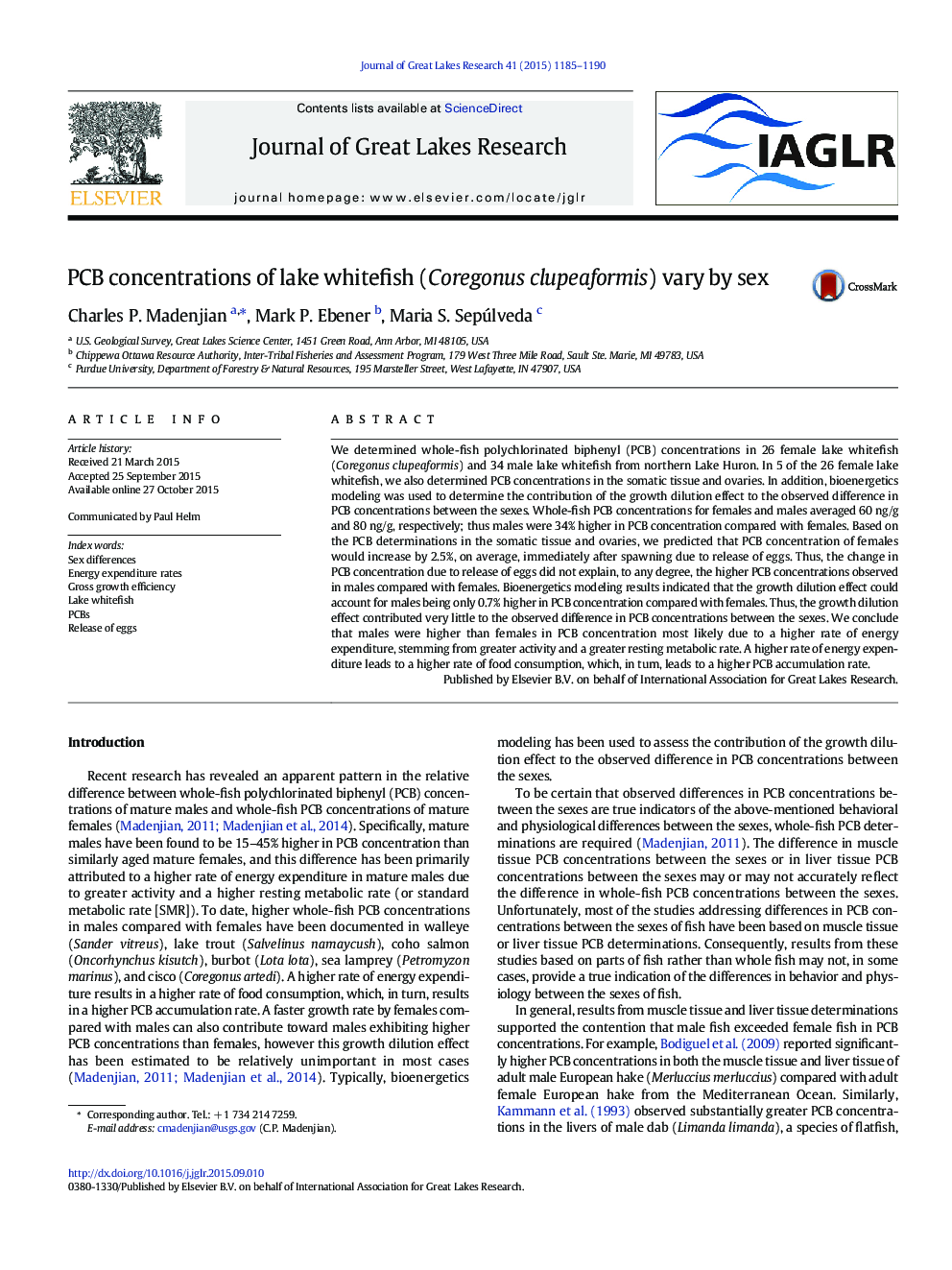| Article ID | Journal | Published Year | Pages | File Type |
|---|---|---|---|---|
| 6304884 | Journal of Great Lakes Research | 2015 | 6 Pages |
Abstract
We determined whole-fish polychlorinated biphenyl (PCB) concentrations in 26 female lake whitefish (Coregonus clupeaformis) and 34 male lake whitefish from northern Lake Huron. In 5 of the 26 female lake whitefish, we also determined PCB concentrations in the somatic tissue and ovaries. In addition, bioenergetics modeling was used to determine the contribution of the growth dilution effect to the observed difference in PCB concentrations between the sexes. Whole-fish PCB concentrations for females and males averaged 60Â ng/g and 80Â ng/g, respectively; thus males were 34% higher in PCB concentration compared with females. Based on the PCB determinations in the somatic tissue and ovaries, we predicted that PCB concentration of females would increase by 2.5%, on average, immediately after spawning due to release of eggs. Thus, the change in PCB concentration due to release of eggs did not explain, to any degree, the higher PCB concentrations observed in males compared with females. Bioenergetics modeling results indicated that the growth dilution effect could account for males being only 0.7% higher in PCB concentration compared with females. Thus, the growth dilution effect contributed very little to the observed difference in PCB concentrations between the sexes. We conclude that males were higher than females in PCB concentration most likely due to a higher rate of energy expenditure, stemming from greater activity and a greater resting metabolic rate. A higher rate of energy expenditure leads to a higher rate of food consumption, which, in turn, leads to a higher PCB accumulation rate.
Related Topics
Physical Sciences and Engineering
Earth and Planetary Sciences
Earth and Planetary Sciences (General)
Authors
Charles P. Madenjian, Mark P. Ebener, Maria S. Sepúlveda,
